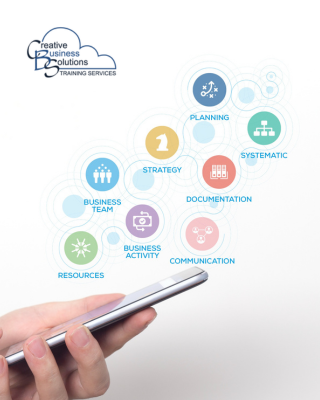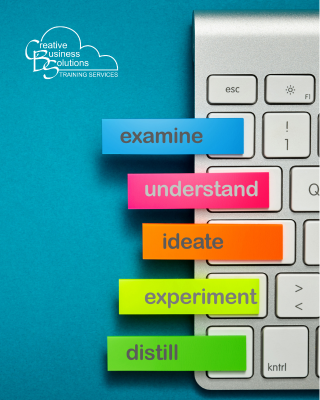
Introduction
To succeed in the accounting and bookkeeping industries, continuous learning is essential for keeping your team agile and your firm ahead of the curve. With evolving regulations, complex tools, and an ever-growing need for clear communication, empowering employees through accessible, practical training has never been more crucial. That’s where Microsoft Stream—integrated within Microsoft 365—steps in as a powerful solution, enabling firms to create, share, and organize video content tailored to their unique professional needs.
Microsoft Stream offers more than just a platform for uploading videos; it provides accounting professionals with the ability to build customized learning experiences, foster collaboration, and make knowledge sharing seamless. By leveraging Stream, your firm can cultivate a culture of ongoing development, ensuring your team remains up-to-date, engaged, and ready to meet every client challenge with confidence.
Let’s examine some practical steps for transforming training and development within your practice.
Getting Started with Microsoft Stream
Setting up Microsoft Stream within your accounting or bookkeeping firm is a straightforward process that can unlock tremendous value in both training efficiency and knowledge retention. With its user-friendly interface, you can create dedicated channels that reflect your team's specific needs, such as onboarding for new hires, ongoing regulatory updates, advanced Microsoft Excel tutorials, or walkthroughs of industry-specific software. Organize your content thoughtfully by assigning clear, descriptive names and categorizing videos for easy navigation.
Stream’s robust customization options enable you to fine-tune access, allowing you to set unique permissions for sensitive materials or specialized courses. Adjust privacy settings to ensure that only the intended audience—whether trainees, managers, or external partners—can view specific content. By strategically setting up these channels and controls from the outset, you lay the groundwork for a well-organized and secure video learning hub, making it much easier for staff to discover, revisit, and share valuable training resources whenever they’re needed.

Creating Training Content
Once your foundational structure is established, the focus shifts to producing engaging and comprehensive training content. This is your opportunity to inspire and motivate your team. Start by pinpointing essential topics—such as software tutorials, regulatory updates, or workflow best practices—and record concise, focused video segments that address each subject individually. By breaking down your training into shorter sections, you make it much easier to update specific content as regulations, processes, or technologies evolve; this way, only the relevant segment needs to be amended or replaced, rather than having to re-record an entire lengthy video.
Encourage participation from your team's subject-matter experts, whose real-world experience brings depth and authenticity to the material. For instance, a tax expert can record a step-by-step tutorial on filling out complex tax forms. At the same time, a software specialist can demonstrate the use of a new accounting tool. Utilize Microsoft Stream's screen recording capabilities to capture these tutorials, transforming complex procedures into accessible, bite-sized lessons.
To enhance accessibility, utilize the platform’s built-in captioning and auto-transcription features, ensuring that every team member—regardless of their learning style or accessibility needs—can engage with the training. Supplement your video content with downloadable resources such as guides or checklists to reinforce the main points and support practical application. This segmented approach empowers employees to learn at their own pace, revisit specific concepts as needed, and continuously strengthen both individual and team skills.
Enhancing Employee Development
Microsoft Stream also excels at supporting employee development by enabling firms to design curated learning paths built from concise video segments, rather than lengthy, all-encompassing recordings. This feature provides a sense of guidance and support. As highlighted in the Getting Started section, creating shorter video clips ensures that information remains focused, digestible, and easy to update when policies or processes change. By organizing these bite-sized training videos into playlists using Microsoft Lists, you can create structured courses that guide employees step-by-step, from building foundational skills to mastering specialized topics.
Moreover, Stream’s built-in analytics tools provide managers with valuable data on individual video engagement and completion rates, making it easier to identify which short clips resonate most with staff and where additional support is needed. Periodically refreshing your library with updated, targeted video segments ensures that you always have access to new regulations, tools, and best practices. By embracing this approach, your firm fosters a culture of continuous, self-directed learning and professional growth—one accessible, relevant video at a time.

Integrating with Other Microsoft 365 Apps
The integration of Microsoft Stream with other Microsoft 365 applications significantly enhances both the reach and usability of your training program. For example, embedding Stream videos directly into Microsoft SharePoint sites allows you to curate a centralized hub where employees can easily browse, search for, and access essential training materials at any time.
Sharing Stream content within Microsoft Teams not only facilitates instant access to learning resources but also sparks dynamic discussions, questions, and feedback from colleagues, all within the channels and chat threads they already use for daily collaboration.
Additionally, linking or embedding Stream videos into Microsoft OneNote empowers employees to create personalized, multimedia training notebooks that combine video demonstrations with written insights, annotated screenshots, and supplementary documents. This interconnected approach ensures that valuable training content is always readily available, encourages knowledge sharing, and facilitates staff's easy integration of learning into their everyday workflows.

Facilitating Client Education
In addition to supporting internal training, Microsoft Stream serves as a powerful platform for client education and training. Accounting and bookkeeping firms can develop clear, engaging videos that break down complex financial concepts, demonstrate step-by-step procedures, or introduce clients to new software tools and compliance requirements.
By sharing these tailored educational videos securely, your firm can empower clients to understand their financial statements better, navigate regulatory changes, and complete routine tasks more independently. This proactive approach not only enhances the client experience but also reinforces your firm’s reputation as a knowledgeable and supportive advisor.
Furthermore, Stream enables you to host live webinars and interactive virtual workshops, fostering meaningful client engagement and providing opportunities for real-time Q&A sessions. Such initiatives strengthen client relationships, position your firm as a thought leader, and help deliver value that extends far beyond traditional accounting and bookkeeping services.
Security and Compliance
Security and compliance are critical pillars for accounting and bookkeeping firms, and Microsoft Stream is designed with these priorities at its core. The platform incorporates advanced security features, including encryption for both in-transit and at-rest data, ensuring that confidential client or firm proprietary information is continually safeguarded from unauthorized access.
Administrators can set granular permission controls, allowing you to specify exactly who can view, share, or edit particular videos within your organization. These robust safeguards help maintain compliance with industry regulations and firm policies around data privacy. By carefully managing access rights and regularly auditing your video content, your firm can significantly reduce risk, uphold professional standards, and preserve the trust of your clients and stakeholders.

Tips and Best Practices
To fully capitalize on the benefits of Microsoft Stream, it’s important to invest in creating engaging and impactful training videos. Focus on keeping each video concise, visually dynamic, and tailored to address the specific needs or challenges faced by your audience, whether it’s onboarding new employees, explaining updates to accounting standards, or demonstrating new software features. Utilize clear visuals, practical examples, step-by-step walkthroughs, and interactive elements, such as quizzes from Microsoft Forms or embedded links, to reinforce key points and enhance retention.
Equally essential is adopting a systematic approach to managing your video library. Consistent naming conventions, comprehensive tagging, and thoughtful categorization make it easy for team members to find and revisit relevant resources. Periodically review your content collection to retire outdated materials and highlight fresh content, ensuring your library remains timely and valuable.
For inspiration, look to case studies and peer insights from other accounting professionals for guidance. Many firms are already utilizing Stream to create more effective training environments, resulting in enhanced staff confidence, improved compliance outcomes, and better-quality client service.
By weaving these best practices into your Stream strategy, your firm can create a living, dynamic resource that transforms both internal training and external communications, empowering ongoing learning, growth, and excellence at every level.




























